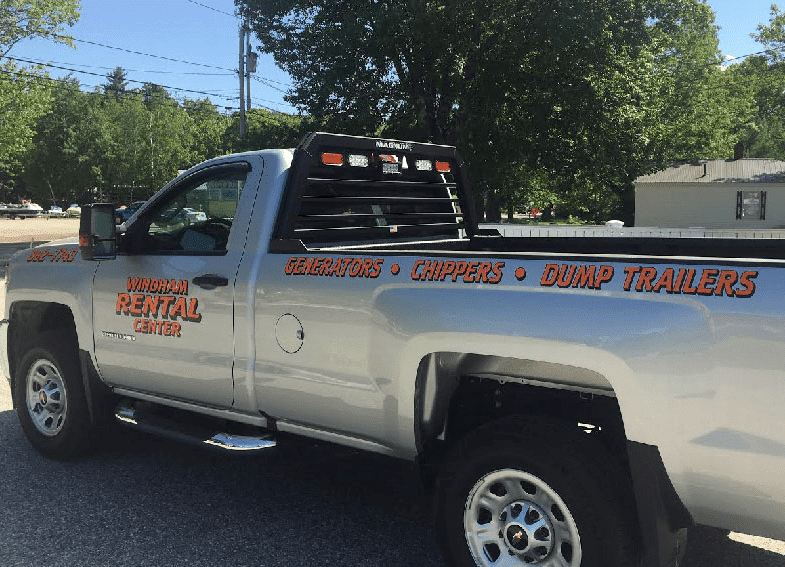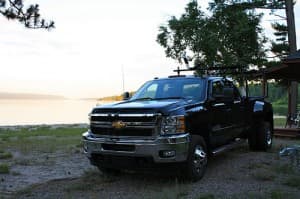Best Pickup Truck for a Contractor


Introduction
Once you have the tools, experience, drive, determination, and the know-how to get the job done, the next question is, what pickup truck can get you and your payload to the site and back? For contractors, the right work vehicle is an important part of the job. Whether you’re hauling the everyday tools you need to a job site or transporting heavy machinery, you need to be able to rely on your truck. Below, we’ve explored how to determine the best truck for you if you’re a contractor.
A ½ Ton vs. ¾ Ton Pickup Truck
A “½ ton” refers to the maximum amount of payload a truck is able to haul. To further explain, if a ton is 2,000 pounds then it would be expected that a 1/2-ton pickup truck should be able to safely transport 1,000 pounds of cargo and passengers (and a 3/4 ton would transport 1,500 pounds of total weight). It is important to note, however, that these standards were set in the 1960’s and that truck manufacturers have made vast improvements allowing for more weight carried-although the references to the trucks have remained the same. The term ½ ton and ¾ ton are still used today but more on a relative basis than an absolute basis. To determine your pickup truck’s capacity, read your manual.
There are several pros and cons to both the ½ ton and ¾ pickup truck. To determine which truck is best for you, consider how you will be using it most. Do you primarily haul heavy cargo? Or do you put a lot of highway miles on instead? How often do you tow, and what types of equipment are you towing? Below are some general things to consider when deciding which type of truck best fits your needs:
- For trips back and forth to the job site, carrying smaller loads, workers and supplies-your best bet would be the one-half ton.
- However, if you will be using your truck to haul heavy loads (either in the bed or pulled behind) very often then the three-quarter ton may be the better option.
- No matter which one you choose always make sure that it fits your specific weight capacity requirements.
Understanding Your Payload Requirements
According to Work Truck Online, there are three components to determining the payload requirement for your company’s vehicle: payload weight, the volume of the payload and the type of payload.
Payload Weight
Ask yourself how much weight will the truck need to carry in its daily workload? One way to determine actual payload is to take a normally loaded truck and weigh it at a truck stop that has scales. Another method is to weigh the front and rear axle. This will tell you if you are overloading the whole truck or just one of the axles.
Volume of Payload
Your company pickup truck needs to be large enough to handle the volume, or size of the payload. Payload size will also help determine if the cargo can be loaded and unloaded by hand, or whether you will need a power Liftgate or some other type of assist to get your payload into the body or onto the bed. You also need to know if the payload is stackable, or limited to the floor space? Finally, how will you secure the product? Bottom line: the size of the payload matters.
Type of Payload
The third component is the type of payload. Are you hauling loose gravel, pallets, or boxes of merchandise? This will determine the type of commercial truck body, van body, or box truck configuration you need to choose.
In summary, “spec’ing the truck to the minimum necessary payload rating (by basing it on an average load) means that the vehicle will be operating at peak capacity most of the time, which may compromise safety and the length of its service life. Conversely, too much payload capacity is wasted capacity,” according to Automotive Fleet.
Considering Fuel Efficiency
A controllable fuel expenditure is the elimination of unnecessary idling. According to Work Truck, drivers should avoid idling whenever possible. If a driver leaves the truck, the employee should be instructed to turn off the engine. It is also important to keep in mind that an engine wears out twice as fast idling as under normal operation.
“When considering fuel efficiency, another way to reduce both tire and fuel costs is to establish a process for drivers to regularly monitor tire inflation. This will increase tire wear-and-tear and reduce fuel efficiency. To control replacement tire costs, eliminate driver behaviors that decrease tire tread life, such as speeding, excessive braking, and driving over curbs.” (Automotive Fleet)
Which Types of Vehicles Do Contractors Prefer?
According to a 2014 study by “Tools of the Trade”:
- GCs who do new construction prefer pickup trucks over other types of vehicles. They also prefer trucks with sufficient towing capabilities.
- Handymen do some of everything so it should be no surprise that they drive some of everything, though pickups are by far the most popular.
- The finish carpenters who answered the survey are big on pickups, standard vans, and trailers.
- The electricians who took the survey are as likely to drive standard vans as pickups and make high use of trailers.